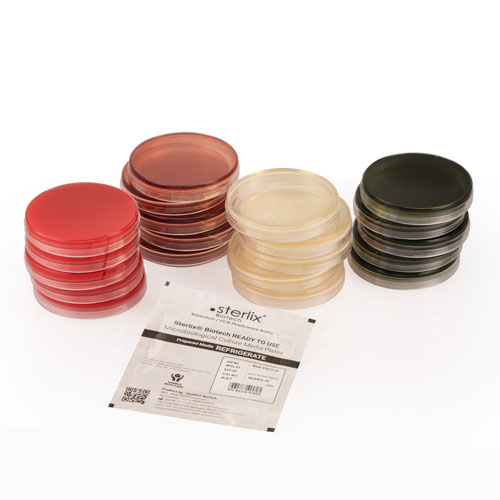STERLIX® Bile Esculin Ready To Use Agar Slant
Product Details
Bile Esculin Agar (BEA) slant is a selective and differential culture medium used for the isolation and identification of certain groups of bacteria, particularly members of the Enterococcus genus. It is commonly used in clinical microbiology laboratories for the detection of enterococci and other bile esculin hydrolyzing organisms.
The composition of Bile Esculin Agar slant typically includes:
Bile Salts: Bile salts are added to the medium to inhibit the growth of Gram-positive bacteria other than enterococci. They act as a selective agent by suppressing the growth of organisms that are not tolerant to bile salts.
Esculin: Esculin is a glycoside compound that serves as a substrate for the enzyme esculinase. Bacteria that possess this enzyme can hydrolyze esculin into glucose and esculetin.
Ferric Ammonium Citrate: Ferric ammonium citrate is added to the medium as a source of iron. It forms a complex with esculetin when hydrolyzed, resulting in the formation of a black precipitate.
Agar: Agar is included as a solidifying agent, providing a solid surface for bacterial growth and colony formation.
To perform the test, a bacterial culture is streaked onto the slant surface of Bile Esculin Agar. The medium is then incubated under appropriate conditions. After incubation, the presence of blackening along the streak line indicates a positive result for esculin hydrolysis.
Bile Esculin Agar slant is particularly useful for the differentiation of enterococci from other streptococci and Gram-positive bacteria. Enterococci can hydrolyze esculin and produce a blackening along the streak line, whereas other bacteria do not exhibit this characteristic reaction.
The composition of Bile Esculin Agar slant typically includes:
Bile Salts: Bile salts are added to the medium to inhibit the growth of Gram-positive bacteria other than enterococci. They act as a selective agent by suppressing the growth of organisms that are not tolerant to bile salts.
Esculin: Esculin is a glycoside compound that serves as a substrate for the enzyme esculinase. Bacteria that possess this enzyme can hydrolyze esculin into glucose and esculetin.
Ferric Ammonium Citrate: Ferric ammonium citrate is added to the medium as a source of iron. It forms a complex with esculetin when hydrolyzed, resulting in the formation of a black precipitate.
Agar: Agar is included as a solidifying agent, providing a solid surface for bacterial growth and colony formation.
To perform the test, a bacterial culture is streaked onto the slant surface of Bile Esculin Agar. The medium is then incubated under appropriate conditions. After incubation, the presence of blackening along the streak line indicates a positive result for esculin hydrolysis.
Bile Esculin Agar slant is particularly useful for the differentiation of enterococci from other streptococci and Gram-positive bacteria. Enterococci can hydrolyze esculin and produce a blackening along the streak line, whereas other bacteria do not exhibit this characteristic reaction.

